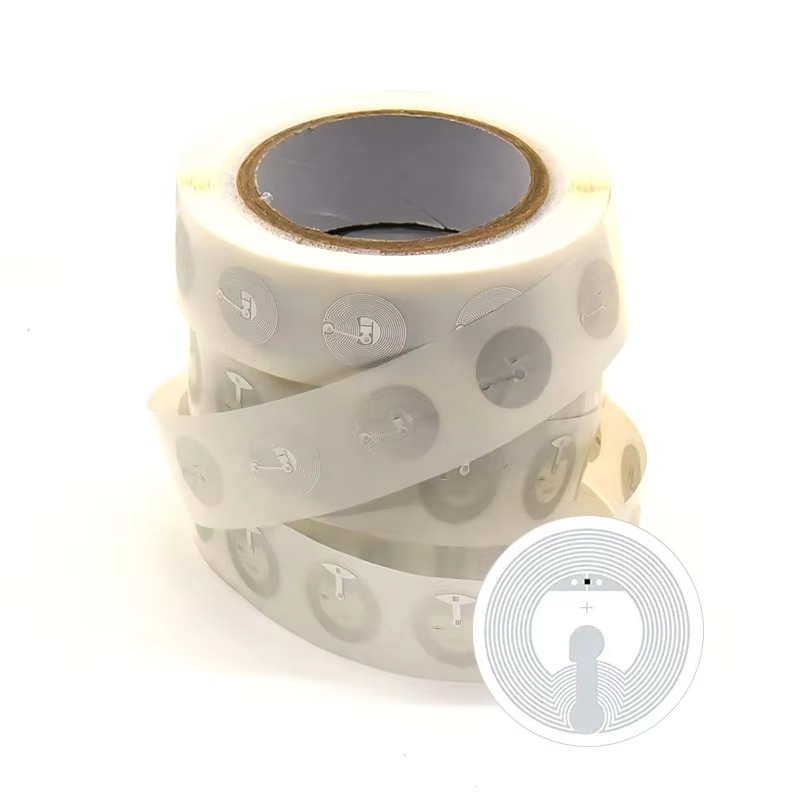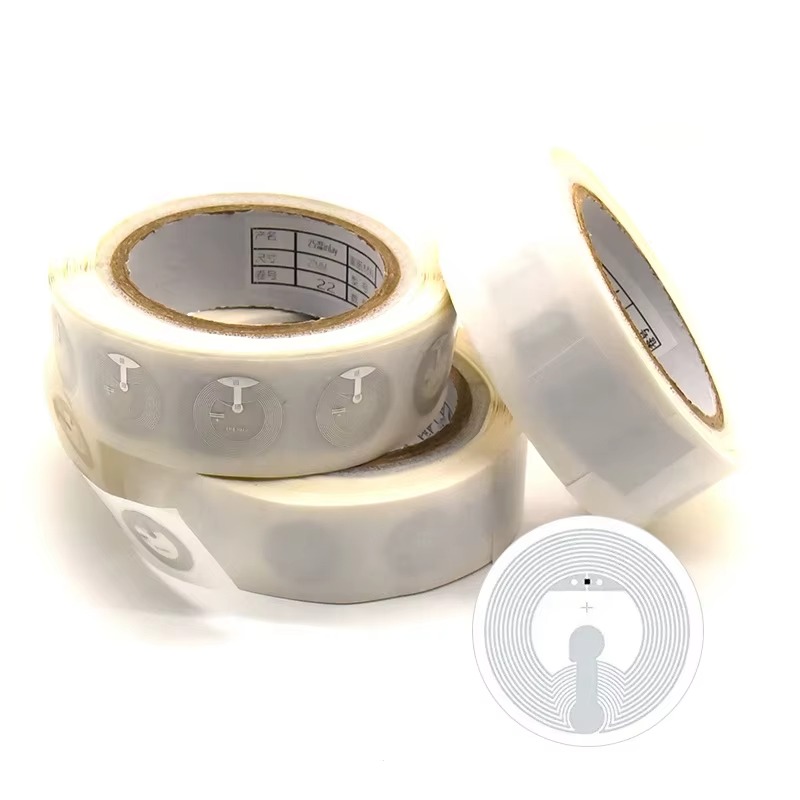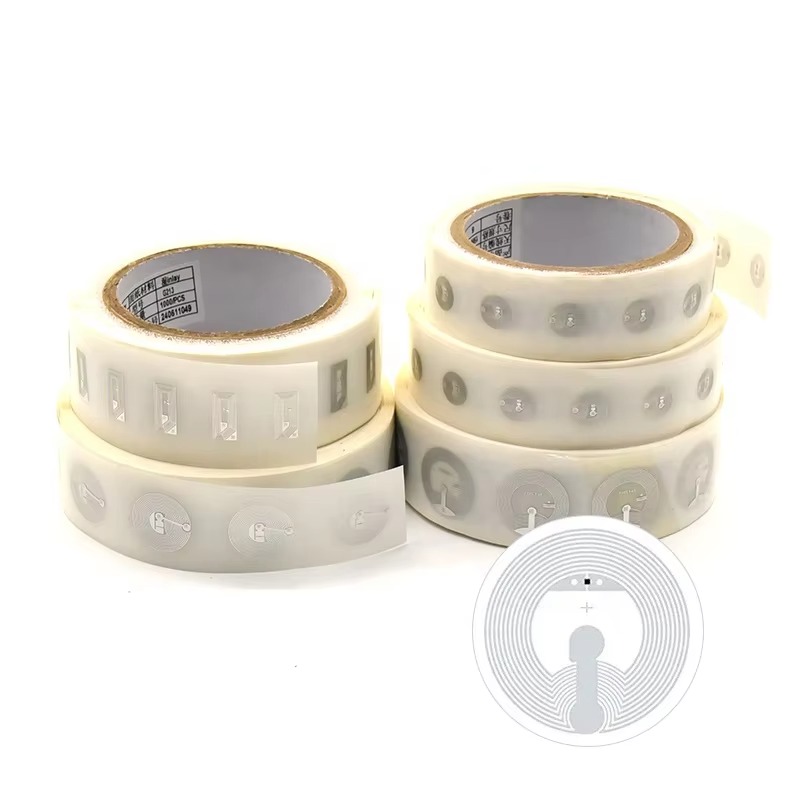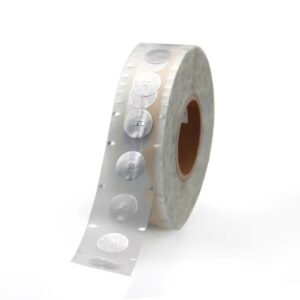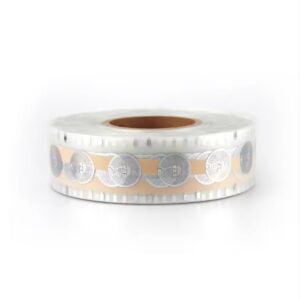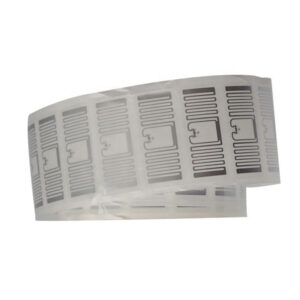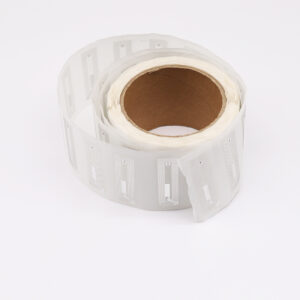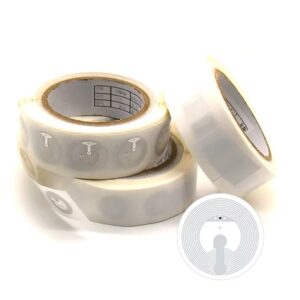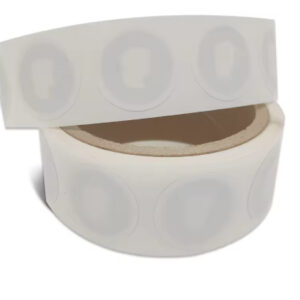NFC Inlay for MlFARE Ultralight EV1 chip
Enhance your retail experience with NFC inlays for secure payments, product authentication, and interactive marketing solutions.
Description
NFC Inlay for MlFARE Ultralight EV1 chip
|
Material
|
Paper /Thermal paper/Fabric/ PVC/ PET
|
|||
|
Size
|
18*56mm,25*25mm, 30*30mm, 40*40mm, Dia18mm ,Dia20mm,Dia22mm ,Dia25mm ,or Customized size.
|
|||
|
Printing
|
No need printing
|
|||
|
Available Chip
|
NXP Mifare Ultralight ev1 |
|||
|
Protocol:
|
ISO/IEC 14443 Type A
|
|||
|
Crafts:
|
Printing, barcode, QR code, etc.
|
|||
The MIFARE Ultralight EV1 is succeeding the MIFARE Ultralight ticketing IC and is fully functional backward compatible. Its enhanced feature and command set enables more efficient implementations and offers more flexibility in system designs.
The mechanical and electrical specifications of MIFARE Ultralight EV1 are tailored to meet the requirements of inlay and paper ticket manufacturers.
Contactless energy and data transfer
In a MIFARE® system, the MF0ULx1 is connected to a coil with a few turns. The MF0ULx1 fits the TFC.0 (Edmondson) and TFC.1 (ISO) ticket formats.
The MF0ULx1 chip, which features a 17 pF on-chip resonance capacitor, supports both TFC.1 and TFC.0 ticket formats.
Anti-collision
An intelligent anti-collision function allows more than one card to operate in the field simultaneously. The anti-collision algorithm selects each card individually. It ensures that the execution of a transaction with a selected card is performed correctly without interference from another card in the field.
Simple integration and user convenience
The MF0ULx1 is designed for simple integration and user convenience, which allows complete ticketing transactions to be handled in less than 35 ms.
Security of NFC Inlay for MlFARE Ultralight EV1 chip
- Manufacturer programmed 7-byte UID for each device
- 32-bit user definable One-Time Programmable (OTP) area
- 3 independent 24-bit one-way counters
- Field programmable read-only locking function per page (per 2 pages for the extended memory section)
- ECC-based originality signature
- 32-bit password protection to prevent unintended memory operations
Understanding NFC Inlays: The Basics
NFC inlays are thin, high-frequency tags that utilize RFID technology to enable contactless communication between devices. These inlays are typically embedded in various materials, including paper, plastic, or other substrates, allowing them to be incorporated into labels, cards, or even promotional materials. The technology operates on the principle of electromagnetic induction, enabling devices like smartphones to communicate with NFC-enabled tags simply by being in close proximity.The core components of an NFC inlay include a chip (such as the MIFARE Ultralight EV1 or NXP NTAG213) and an antenna. Together, they facilitate data exchange and energy transfer, making NFC inlays a versatile solution for a multitude of applications.
Key Features of NFC Inlay for MlFARE Ultralight EV1 chip
One of the standout features of NFC inlays is their compatibility with various NFC standards, including ISO 14443 and ISO 15693. This ensures that they can be used across a wide range of devices and applications. The MIFARE Ultralight EV1 is particularly noteworthy for its backward compatibility with previous versions, making it a flexible choice for businesses looking to upgrade their systems without a complete overhaul.Moreover, NFC inlays often come with advanced functionalities such as:
- Anti-collision technology: This allows multiple NFC tags to operate simultaneously without interference, ensuring smooth transactions.
- Security features: Many NFC inlays, such as those from Avery Dennison, include encryption and password protection, providing an added layer of security against unauthorized access.
- User-friendly integration: Designed for quick implementation, NFC inlays can be integrated into existing systems with minimal effort, allowing businesses to streamline their operations effectively.
Benefits of Using NFC Inlay for MlFARE Ultralight EV1 chip
Investing in NFC inlays offers numerous benefits for businesses:
- Enhanced Customer Experience: NFC technology simplifies the interaction between customers and products, enabling quick access to information or transactions with just a tap of their smartphone.
- Cost-effective Solutions: NFC inlays are typically more affordable than traditional RFID systems, making them an attractive option for businesses of all sizes.
- Increased Engagement: With capabilities for storing URLs, product information, or promotional content, NFC inlays encourage customers to engage more deeply with brands and products.
Applications of NFC Technology
NFC inlays are becoming ubiquitous across various industries, including:
- Retail: From smart labels that provide product information to loyalty programs that reward customers with just a tap, NFC inlays are revolutionizing retail experiences.
- Event Management: NFC wristbands or badges enable seamless entry to events, allowing for easy tracking and management of attendees.
- Smart Packaging: Brands are utilizing NFC inlays in packaging to provide consumers with interactive content, such as recipes or product usage instructions.
Comparing Different NFC Inlays: NTAG213, NTAG215, NTAG216
When selecting an NFC inlay, it’s essential to understand the differences between popular options like NTAG213, NTAG215, and NTAG216.
| Feature | NTAG213 | NTAG215 | NTAG216 |
|---|---|---|---|
| Memory Size | 144 bytes | 504 bytes | 888 bytes |
| UID | 7 bytes | 7 bytes | 7 bytes |
| Read Range | Up to 10 cm | Up to 10 cm | Up to 10 cm |
| Security Features | Basic | Advanced | Advanced |
Each of these inlays has unique characteristics that cater to different application needs, allowing businesses to select the most suitable option based on their requirements.
Integration of NFC Inlays in Retail
NFC inlays are perfect for enhancing the retail environment by providing innovative solutions like:
- Contactless Payment: Customers can make purchases quickly and securely using their smartphones.
- Product Authentication: NFC inlays can provide a unique ID for each product, helping to combat counterfeiting and ensure authenticity.
- Interactive Marketing: Utilizing NFC tags in advertising can lead to increased customer engagement through promotional offers or detailed product information.
Security Features of NFC Inlays
Security is paramount in today’s digital landscape. NFC inlays come equipped with various security features, including:
- Manufacturer programmed 7-byte UID: Each NFC inlay has a unique identifier, ensuring that transactions are secure and traceable.
- 32-bit password protection: This prevents unauthorized access and unintended memory operations, giving businesses peace of mind.
- ECC-based originality signature: This ensures that products are genuine and not tampered with.
Environmental Impact and Sustainability
As businesses increasingly focus on sustainability, NFC inlays stand out as eco-friendly solutions. Many NFC inlays are made from recyclable materials, reducing waste and environmental impact. Moreover, their integration into existing systems can lead to improved efficiency, further contributing to a more sustainable approach to business operations.
Customer Reviews and Case Studies
Feedback from customers using NFC inlays is overwhelmingly positive. Many report enhanced customer satisfaction due to the ease of use and increased engagement. For example, companies in the retail sector have seen significant improvements in loyalty program participation and customer interaction metrics after implementing NFC technology.
Case Study: Avery Dennison NFC Inlays
Avery Dennison’s NFC inlays have been successfully integrated into various retail environments, providing efficient solutions for product information access and customer interaction. Retailers using Avery Dennison products reported a 30% increase in customer engagement and a 20% boost in sales during promotional campaigns.
FAQs about NFC Inlays
1. What is an NFC inlay?
An NFC inlay is a thin, contactless tag that uses NFC technology to enable communication between devices. It typically consists of a chip and an antenna, facilitating data transfer and energy exchange.
2. How do NFC inlays work?
NFC inlays operate on the principle of electromagnetic induction, allowing devices like smartphones to communicate with the tags when they are in close proximity.
3. Are NFC inlays secure?
Yes, many NFC inlays come with built-in security features, including password protection and encryption, ensuring secure transactions and data transfer.
4. Can NFC inlays be used for payments?
Absolutely! NFC inlays are widely used in contactless payment systems, making transactions quick and secure for customers.
5. Where can I purchase NFC inlays?
NFC inlays can be purchased from various suppliers, including Avery Dennison, and are available in different types and specifications to meet diverse application needs.
Conclusion
In conclusion, NFC inlays are a reliable and state-of-the-art product that meets a variety of application needs across multiple industries. With their cost-effectiveness, security features, and ease of integration, investing in NFC technology is a smart choice for businesses looking to enhance customer experiences and streamline operations. To learn more about NFC inlays and explore our product recommendations, please fill out the inquiry form today!

